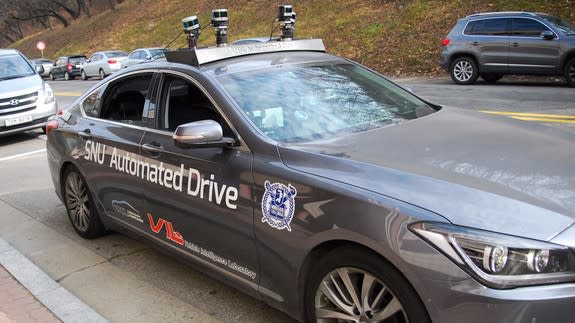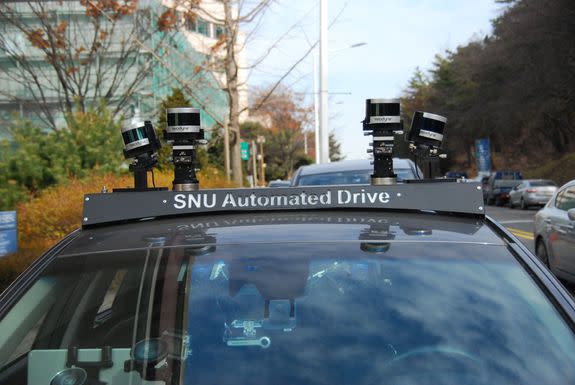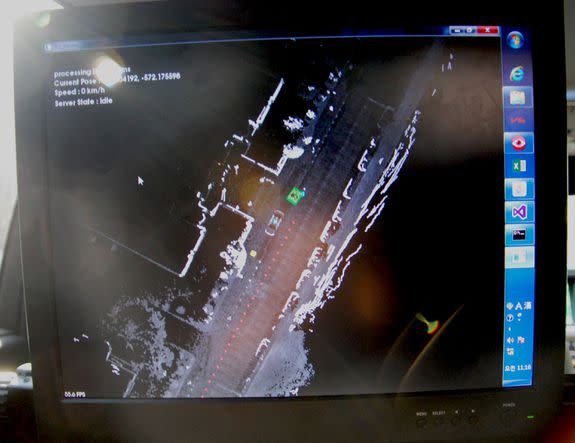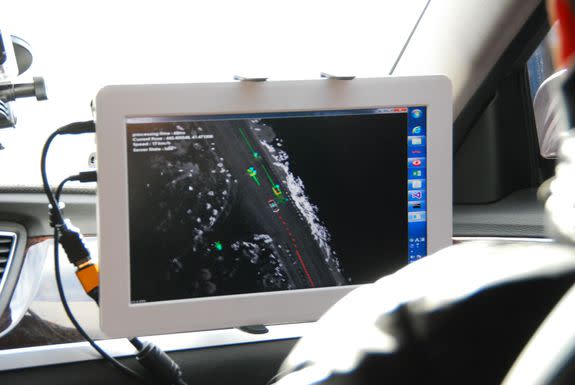This driverless car will hit South Korea roads this year

While Uber and Tesla grab headlines in self-driving car tech, Korean engineers are building an autonomous vehicle that is planned for roadworthiness by the middle of this year.
A team at the Seoul National University have been building their self-driving car — cleverly named SNUber — for the past couple of years. While it's been available for use on campus via an app, the team is ready to test the outside terrain, thanks to Korea recently opening downtown roads to self-driving cars.
SEE ALSO: This 13-foot-tall mechanical suit looks like something straight out of a sci-fi film
In a ride I had with two engineers, the car safely maneuvered through traffic on the Seoul campus, stopping for pedestrians, slowing traffic and oncoming buses that poked into its lane.
It was also able to overtake obstacles like double-parked cars and made safe left and right turns — perhaps more passively than the average driver in safety-first, “grandma-style” fashion, as Seo Seung-woo, lead professor on the project, put it.
Seo's team of around 20 engineers is aiming for Level 4 driverless technology — regarded as full autonomy, which involves ferrying a passenger from door-to-door on regular roads. They expect the tech will be ready for primetime by 2025.
For now, the team has much to tackle. Because autonomous vehicles are uncharted ground in South Korea, the university's Vehicle Intelligence Lab must be an all-round map-making, tech-developing, car-souping team.

Image: ELAINE RAMIREZ/MASHABLE
They've tested the vehicles in snow and rain too, and is seeking more data for nighttime driving and more severe driving conditions.
Seo said the lab expects its research to allow it to eventually step into the commercial realm as a technology supplier for carmakers.
South Korea's Hyundai, for one, has expressed interest in autonomous vehicles. It's said it's keen to have Google to take the reins on its self-driving development, so it can bring partially semi-automated vehicles to market by 2020.
Last November, the carmaker took its Ioniq concept vehicle out for a spin at the L.A. Auto Show.
What the car sees

Image: ELAINE RAMIREZ/MASHABLE

Image: ELAINE RAMIREZ/MASHABLE
“Economically and socially, there is so much evidence of why people will pursue and why people want autonomous driving in the future,” said Seo.
One is a rapidly aging society. More than half of Koreans are expected to be older than 52 by 2040, and they will need a tool for mobility, he said.
Elaine Ramirez is a tech correspondent based in South Korea.

 Yahoo News
Yahoo News 